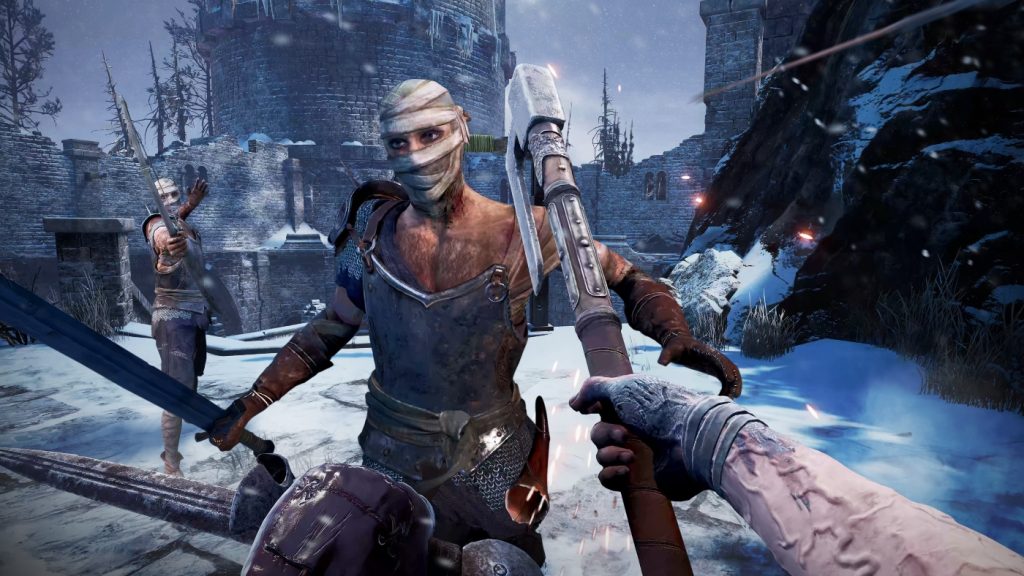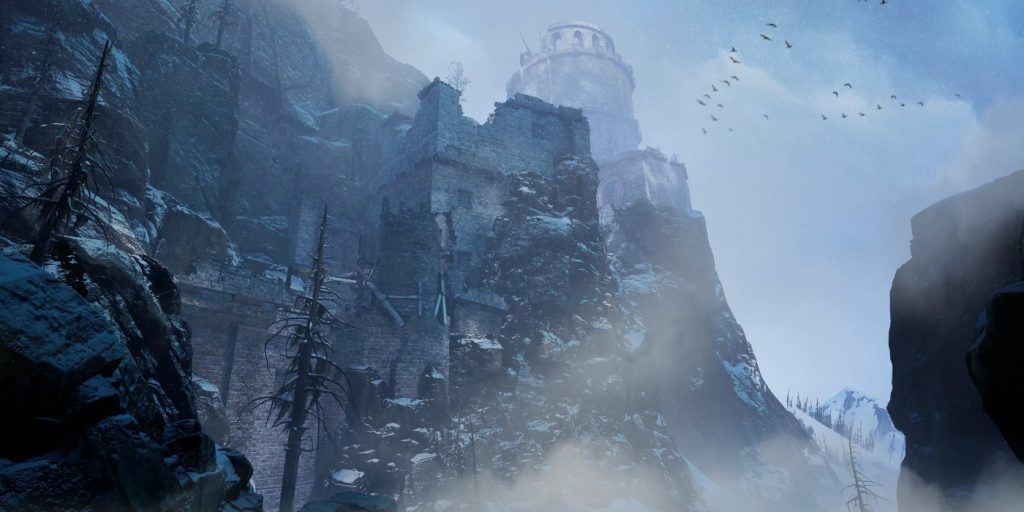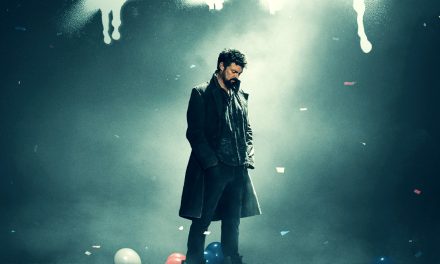Skydance’s Behemoth is a sprawling fantasy landscape that challenges players with a solid VR fantasy setting. Set in the frozen tundra known as the Forsaken Lands, players are tasked with exploring the realm while contending with a mysterious and mystical disease. In the VR setting, every foe is a unique challenge to overcome, relying on the player’s motions and movements for blocks and strikes. The real appeal of the game is far larger scale of the monsters that roam the lands.
The titular Behemoths can be found across the land. Players brave enough to head into battle against the creatures will find themselves dealing with giants that stand stories tall and demolish mountains like it was nothing. During an interview with That Hashtag Show, Skydance Vice President of Creative Shawn Kittelsen broke down the scope of the game, how they planned out monster encounters, and how to bring the monster-filled tundra to life in VR.
RELATED: CELEBRATE ALIEN DAY WITH ‘ALIEN: ROGUE INCURSION’, A NEW VR GAME FOR PC, PSVR, AND META QUEST

THS: How did you and the rest of the team at Skydance break down the scope of Behemoth? I could see this becoming potentially overwhelming, but the game handles very well.
Shawn Kittelsen: The scope of Behemoth — it’s relative to something like The Walking Dead: Saints & Sinners. In that, since the center’s very intimate scope in a way, you’ll be creeping through tight alleyways and under floorboards and through hallways and houses, and you’re getting up close and personal with a lot of Walkers. But Walkers are kind of soft and dispatchable. You can escape them. We wanted these big, wide open spaces. VR can do a lot of cool things with scale. We can make those small, intimate spaces feel really tight and claustrophobic. It can also make something big.
One of the primary goals from the start was to just achieve a sense of scale. It has an epic scale that we couldn’t do with The Walking Dead just because it’s a very different game. Then it became about getting the traversal down. If you have these epic spaces, you can have all the verticality you want to get across an area or scale up an area really quickly. Then it was about getting to a place where we could create these arenas for the Behemoths and make them feel big enough.
All of that was a lot of trial and error. A lot of it came down to starting too small. [The Behemoth featured in the preview], we started with it at about half the size that it is currently at. That was just us being really conservative with what we felt we could achieve with the tech. Once we played it enough, we got the sense that it is just not big enough. We really wanted to deliver on people’s expectations from seeing the trailer a couple of years ago. We really wanted to challenge ourselves.
THS: How would you say this compares to the kind of open-world exploration we’ve seen in other titles?
Kittelsen: When you’re playing a first-person shooter, whatever you look at is what you’re pointing at. Your aim and your gaze are stitched together. In game, your gaze and aim are not stapled together. In a third-person adventure, you can kind of have to cheat, because you have such a broader viewpoint. You can actually see more than just what’s in your immediate perspective. You can move to the left while you are looking to the right. You can gaze in one direction while moving in another direction.
I feel like that the ability to then triangulate between your head and your hands really changes the experience from what you would have gotten. There’s stuff like Shadow of the Colossus which has this cool third-person perspective, but you’re a little bit detached. It seems like this thing is huge, because you see your player character as a very small thing on it. It’s so different when you are the small thing. It’s kind of terrifying!
RELATED: ‘STAR WARS OUTLAWS’ NEW STORY TRAILER AND RELEASE DATE ANNOUNCED

THS: How did you approach the difficulty curve in something like this?
Kittelsen: There’s a gradual onboarding to get to the Behemoth. We don’t want it to be Dark Souls for everyone. You’re not just talking about someone’s ability to recall buttons and sticks. You’re asking people to lend their physical capacity to the game. There’s going to be a range of difficulties and a story mode. There’s modes for people who just want to enjoy the ride. And then there’s the hardcore people like me… I’m the worst test case for the team [Laughter]. They keep telling me “you keep trying to make this game harder!” And I’m like, “I want to feel the pain!” [Laughter] I think most people will probably fall somewhere in the middle, in between story and brutality. You’re getting story, you’re getting adventure, but you’re also learning each mechanics gradually. You’re getting an opportunity to practice it a lot and apply it.
By the time you reach a Behemoth, it’s like Shadow of the Colossus or Breath of the Wild. You’ve acquired all these tools and skills. You’ve used them throughout your adventure, through dungeons and whatnot. You’ve used them in different situations. The Behemoth is where you combine everything you’ve learned. You’ll be hacking, slashing, swinging, zipping, climbing, and surviving all at once.
THS: What would you say was the biggest surprise you discovered during the development of Behemoth?
I think the most surprising thing was finding out just how far our team could push the things that we were trying to do. There was a sense of caution, initially. “How big is too big?” But then we threw caution to the wind. There’s no such thing as too big. Just go bigger. We went and did that in every aspect of the game… I think the the most surprising aspect was learning that there’s no such thing as too big.
Behemoth will release in the Fall of 2024 on Meta Quest 2 and 3, PlayStation VR2, and PC VR

![[PREVIEW] Skydance’s Epic VR Fantasy ‘Behemoth’ Lives Up To The Name](https://thathashtagshow.com/wp-content/uploads/2024/08/Skydance-Behemoth-Shawn-Kittelsen-interview-1280x640.png)

![#AMFAD: All My Friends Are Dead: Jade Pettyjohn [Interview]](https://thathashtagshow.com/wp-content/uploads/2024/08/project_20240801_1746338-01-440x264.png)

